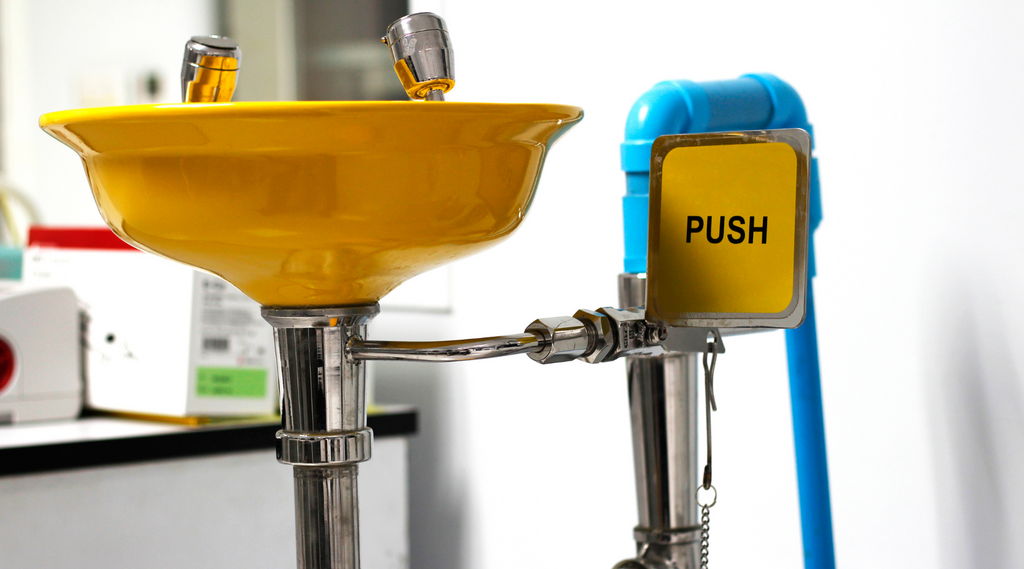
In many places, controlling water temperature is key for both safety and comfort. This task is often handled by a device known as a mixing valve. This article will explain the function and importance of the mixing valve. We will also look at how it differs from the tempering valve vs mixing valve, and the specific role of the thermostatic mixing valve. Understanding these devices can greatly improve safety and efficiency in managing water temperatures.
What Is A Mixing Valve?
A mixing valve is a device that blends hot and cold water supply to achieve a desired temperature output. This mechanism ensures that water is delivered at a safe and consistent temperature, preventing scalding or discomfort. What is a mixing valve primarily used for? It's crucial in places like showers, sinks, and other water outlets where temperature control is necessary for user safety.
Common parts of a mixing valve include:
- Valve Body: The main structure that houses the components of the mixing valve.
- Thermostatic Element: Senses the temperature of the water and adjusts the mix to maintain consistency.
- Control Knobs: Allow the user to set the desired temperature manually.
- Check Valves: Prevent the backflow of water, keeping the supply lines separate.
- Mixing Chamber: The area where hot and cold water combine to reach the set temperature.
Each part plays a critical role in the efficient and safe operation of the mixing valve.
What Is A Tempering Valve?
Unlike mixing valves, a tempering valve specifically blends hot water with cold to a pre-set temperature before it reaches the tap. This ensures that the water delivered is safe from scalding risks. Often used in residential plumbing systems, tempering valves are essential for areas where temperature control must be precise and constant, such as in showers and bathtubs.
Tempering Valve vs Mixing Valve
Both the tempering valve and the mixing valve are crucial in managing the water temperature in plumbing systems, ensuring it is safe and comfortable for use. Each valve blends hot and cold water but does so to achieve specific safety and comfort goals. They both play essential roles in preventing scalding by regulating the output temperature. Additionally, both types of valves are commonly used in residential and commercial settings.
However, the tempering valve is primarily designed to limit the hot water to a predetermined safe temperature. In contrast, a mixing valve can be adjusted to control the water temperature more flexibly. The tempering valve vs mixing valve comparison shows that tempering valves are simpler, focusing solely on safety, while mixing valves offer temperature control for both safety and comfort. Another key difference is that mixing valves are often part of more complex systems like HVAC units or large plumbing systems, whereas tempering valves are typically found in simpler, smaller-scale applications.
Here is a table comparing the two:
| Feature | Tempering Valve | Mixing Valve |
| Primary Use |
Safety; prevents scalding by setting a max temperature |
Flexibility; controls temperature for comfort and safety |
| Adjustability |
Fixed temperature setting |
Adjustable temperature settings |
| Complexity |
Less complex, often used in homes |
More complex, used in various systems |
| Scope of Application | Smaller-scale, like residential bathrooms | Broader, including HVAC and large plumbing systems |
What Is A Thermostatic Mixing Valve?
Building on the concept of a mixing valve, the thermostatic mixing valve adds an advanced layer of control. This type of mixing valve uses a thermostatic element to automatically adjust the mixing of hot and cold water to maintain a consistent output temperature, regardless of changes in the water supply temperatures. The thermostatic mixing valve is especially valuable in environments where precise temperature control is critical, such as in hospitals or elderly care facilities.
How Thermostatic Mixing Valve Works
The thermostatic mixing valve functions through several key components, each designed to ensure precise temperature control:
- Thermostatic Element: This is the core of the thermostatic mixing valve. It contains a wax capsule that expands or contracts in response to temperature changes. As it changes, it adjusts a piston which controls the proportion of hot and cold water mixing, ensuring constant output temperature.
- Valve Body: The body of the thermostatic mixing valve houses all its internal components. It is typically made from durable materials that can withstand varying water pressures and temperatures, providing a stable environment for the thermostatic element to function effectively.
- Check Valves: Integrated into the design of the thermostatic mixing valve, these check valves prevent any reverse flow of water. This is crucial for maintaining the integrity of the water supply and ensuring that the mixed water does not contaminate the main supply lines.
- Temperature Adjustment Handle: This handle allows users to set a desired temperature for the water output. By adjusting this handle, the balance of hot and cold water can be fine-tuned, giving more control over the final water temperature delivered through the mixing valve.

How To Install TMV
After understanding how a thermostatic mixing valve works, installing one can significantly improve your water temperature control. Here are the steps to install a thermostatic mixing valve:
- Shut Off the Water Supply: Before you begin, ensure that the main water supply is completely turned off to avoid any leaks or water damage during installation.
- Prepare the Installation Site: Choose a location close to the water heater for the thermostatic mixing valve. Clear the area of any debris and ensure there's enough space for easy access during maintenance.
- Install the Valve: Mount the thermostatic mixing valve according to the manufacturer’s instructions. Make sure it's securely attached and oriented correctly, with the hot and cold inputs and the mixed water output clearly marked.
- Connect the Water Lines: Attach the hot and cold water lines to their respective inputs on the mixing valve. Use appropriate tools to ensure the connections are tight and secure to prevent any leaks.
- Set the Desired Temperature: Adjust the temperature control on the thermostatic mixing valve to your preferred setting. This usually involves turning a dial or moving a lever to the desired temperature mark.
- Test the Valve: Once everything is connected and in place, turn the water supply back on. Check for any leaks and test the thermostatic mixing valve by running the water and verifying that it maintains the set temperature, adjusting as necessary.
- Insulate the Pipes: To prevent heat loss and protect the pipes from freezing in colder climates, insulate the pipes around the thermostatic mixing valve.
These installation steps provide a general guide for setting up a thermostatic mixing valve. However, installation can vary based on specific plumbing systems and local codes. For optimal safety and performance, it is highly recommended to seek the expertise of a professional plumber. This ensures your installation adheres to all safety standards and functions correctly.
Thermostatic Mixing Valve vs Tempering Valve
Both the thermostatic mixing valve and the tempering valve play essential roles in regulating water temperatures, ensuring safety against scalding. These valves are critical in settings where water temperature consistency is necessary, such as in bathrooms and kitchens. Additionally, both types of valves blend hot water and cold water to prevent extreme temperatures that could cause injuries.
However, there are significant differences between them. The thermostatic mixing valve offers more precise temperature control through its responsive thermostatic elements, which adjust the water mix based on real-time temperature changes. This makes them ideal for environments requiring strict temperature regulations. On the other hand, a tempering valve generally has a fixed setting that limits the maximum temperature of the water, which can be less flexible but simpler to manage in residential applications.
Here is a table summarizing the key similarities and differences:
| Feature | TMV |
Tempering Valve |
| Control |
Automatic adjustment to temperature changes |
Fixed temperature setting |
| Complexity |
More complex, suitable for diverse applications |
Simpler, often used in residential settings |
| Accuracy |
High precision in temperature control |
General control over maximum temperatures |
| Application |
Ideal for healthcare and childcare facilities |
Common in household water systems |
| Safety | Reacts instantly to prevent scalding | Provides a basic level of scald prevention |
Where To Use Each
Following our comparison, it's helpful to know where each valve type is most effectively used. Here’s where you might commonly find a thermostatic mixing valve and a tempering valve:
Thermostatic Mixing Valve:
- Healthcare Facilities: Ensures precise water temperatures critical for patient safety and infection control.
- Childcare Centers: Provides safe water temperatures to protect young children from scalding.
- Public Showers and Bathrooms: Maintains consistent water temperatures even with fluctuating demands.
- Industrial Applications: Used where precise temperature control is crucial to process consistency and worker safety.
Tempering Valve:
- Residential Bathrooms: Prevents scalding by limiting the maximum output temperature of water in home settings.
- Kitchen Sinks: Ensures that the water temperature remains safe for daily kitchen tasks without the risk of scalding.
Understanding the appropriate applications for each valve helps ensure the right choice for specific needs, enhancing safety and functionality in various environments.
Why We Need TMV and Tempering Valve

The thermostatic mixing valve (TMV) and tempering valve are crucial for maintaining safe water temperatures, essential for preventing injuries due to scalding. These valves ensure water temperature remains within safe limits across various settings, providing peace of mind. They also contribute to energy efficiency by managing the precise mixing of hot and cold water, which can reduce overall energy consumption.
For eye wash stations, particularly in environments where chemicals are used, maintaining tepid water compliant with ANSI Z358.1 standards is vital. A thermostatic mixing valve ensures that water is not too hot or too cold, critical for immediate emergency use without causing further harm. Similarly, a tempering valve can be set to keep water temperatures within the safe range required by ANSI standards, guaranteeing that the water is always ready for effective and safe emergency eye flushing.
Mixing Valve FAQs
What happens when a mixing valve fails?
When a mixing valve fails, it can lead to inconsistent water temperatures. This might result in water being too hot, leading to scalding, or too cold, which can be uncomfortable and ineffective for tasks like cleaning.
Where is the water mixing valve located?
A water mixing valve is typically located near the water heater or within major appliances that use hot water, such as dishwashers or washing machines. It can also be found under sinks and in shower plumbing.
Do I really need a mixing valve?
Yes, if you require precise control over water temperature. A mixing valve helps prevent scalding and can contribute to water conservation by efficiently managing hot water usage.
Is a tempering valve a mixing valve?
No, a tempering valve is a type of mixing valve with a specific function. It mixes hot and cold water but is primarily designed to limit the maximum hot water temperature to prevent scalding.
Is a mixing valve the same as an anti scald valve?
Yes, a mixing valve can function as an anti-scald valve. It regulates the mix of hot and cold water to prevent excessively hot temperatures, thus serving as an anti-scald device.
What is the problem with tempering valves?
The main issue with tempering valves is their lack of adjustability. They are set to a fixed temperature, which might not be suitable for all uses and can be less flexible compared to thermostatically controlled valves.
What are two types of mixing valves?
Two common types of mixing valves are manual mixing valves, which require manual adjustment, and thermostatic mixing valves, which automatically adjust the water temperature based on changes in the flow and temperature of incoming water.
